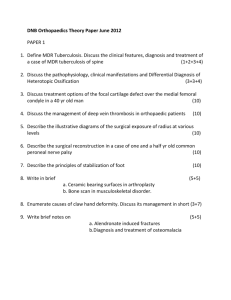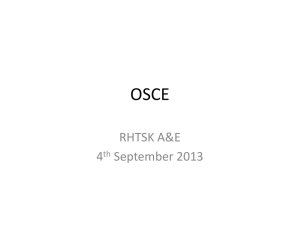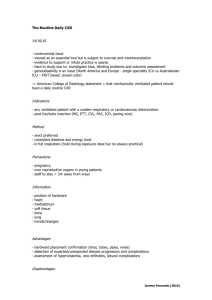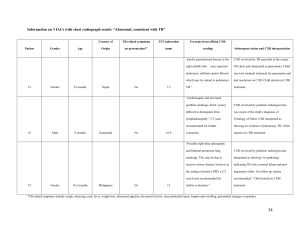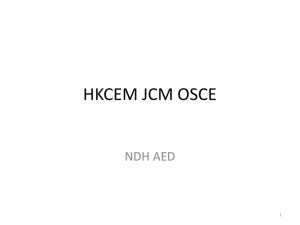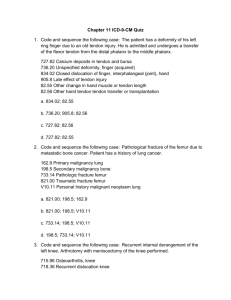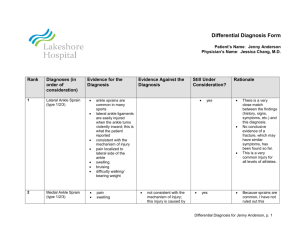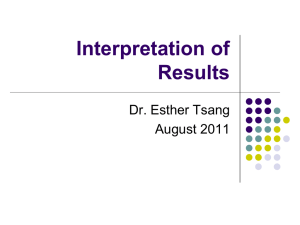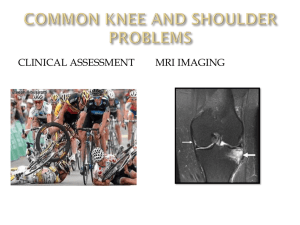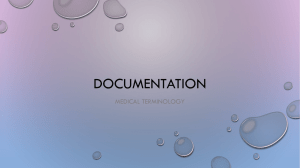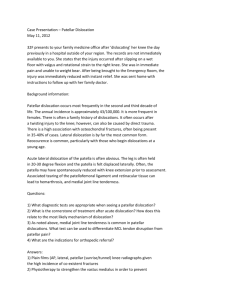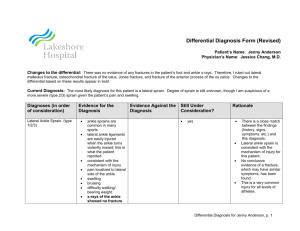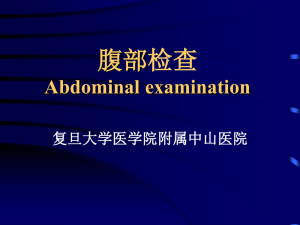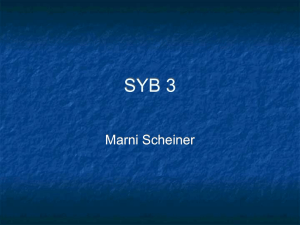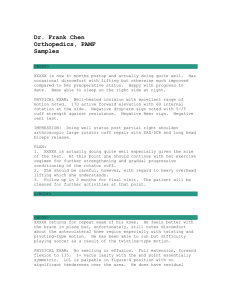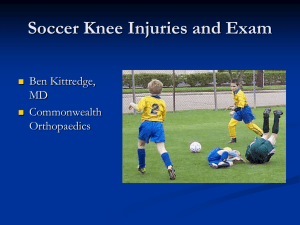OSCE (Answer)
advertisement
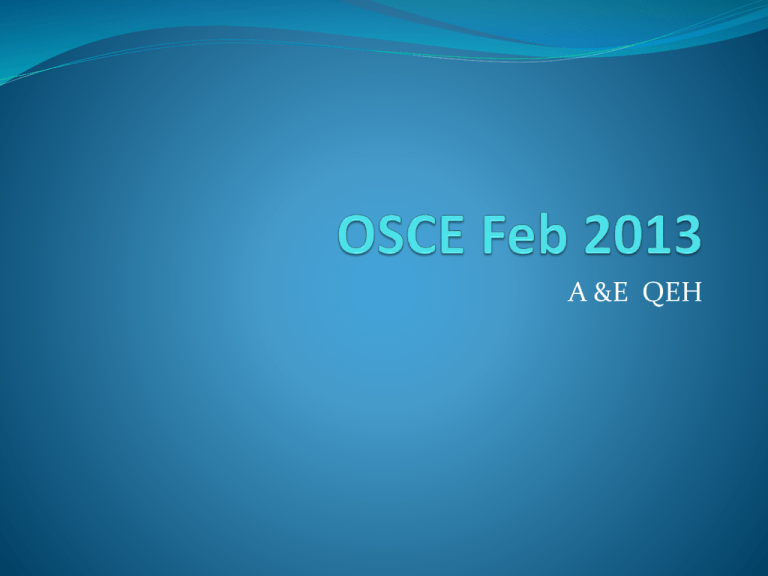
A &E QEH Question 1 A 73 years old gentleman had a medical history of DM and CVA. He presented with fever and decrease in general condition. CXR was performed Name 3 abnormalities on CXR Lung shadow at Lt upper zone Erosion of Lt 5 th posterior rib Osteolytic lesion at Lt proximal humerus What is the likely provisional diagnosis? Ca lung with bone metastasis How do you calculate the adjusted calcium level? measured total Ca (mmol/L) + 0.02 (40 - serum albumin [g/L]) Name 5 treatments for malignant associated hypercalcaemia Rehydration Biphosphate e.g. Pamidronate Calcitonin ( fast acting) Steroid ( in case of hematological malignancy) Haemodialysis for severe case Question 2 A woman slipped and fell in the street and sustained a “ Rt knee sprain “ during a fall. Name 2 prediction rules on XR utilization for knee injury Age 55 years or older Tenderness at head of fibula Isolated tenderness of patella Inability to flex to 90° Inability to bear weight both immediately and in the emergency department Ottawa Knee Rule Pittsburgh knee rules How do you compare the two rules in term of sensitivity and specificity • Sensitivity : no difference • Ottawa 97% (90 to 99%); • Pittsburgh 99% (95% CI 94% to 100%). • Specificity: Pittsburgh rule significantly more specific • Ottawa 27% (23 to 30%), Pittsburgh 60% (56 to 64%). • Seaberg D, Yealy D, Lukens T, et al. Multicenter comparison of two clinical decision rules for the use of radiography in acute, high risk knee injuries. Ann Emerg Med 1998;32:8e13 What is the diagnosis? Avulsion fracture at the insertion site of PCL How to test the ACL Anterior drawer test Lachman test Pivot shift Question 3 A young man presented with Rt wrist injury during a fall on outstretched hand. What is the diagnosis? Scaphoid fracture ( waist ) Name three physical examination for this orthopedic condition Tenderness at anatomic snuffbox Tenderness at scaphoid tubercle Pain elicited with axial compression of thumb Name three potential complications 1. Avascular necrosis 2. Non-union/ Malunion 3. Radiocarpal arthritis with chronic pain and stiffness When to consider operative treatment? Unstable/Displaced / Comminuted fracture Proximal fracture Nonunion Question 4 A 53 year old male psychiatric in-patient was transferred for assessment of fever and back pain. Please suggest some DDx Uncomplicated viral illness Spinal infection Pyelonephritis Psoas abscess Pneumonia Epidural abscess Spinal Malignancy . The CXR abnormalities are probably too subtle. After more physical examination, the medical officer decided to take further XR for investigation. What is the abnormality and diagnosis? XR T spine: destroyed endplate at T7-T8 CXR: Bulging of the Lt paraspinal line Infectious sponylitis What are the common causes in such a condition? Tuberculosis Staphylococcus aureus Question 5 A 22 months baby presented with abdominal pain and passing blood stained stool. Name four DDX for this age group Intussusception Meckle diveticulum Hench-Schonlein purpura Gastroenteritis Abdominal mass was found at RUQ during USG What is the diagnosis? Intussusception What is the classical USG appearance? Pseudokidney sign ( longitudinal view ) Bull’s eye sign ( transverse view) Suggestion the initial treatment. What is the success rate? Air reduction Success rate 80-90% What are the indications for surgery? Failed non operative treatment Bowel perforation or bowel necrosis The presence of lead point requiring resection Question 6 A 79 year old elderly, living alone, was found collapse at home by relatives. She was unconscious on arrival. ECG was performed. List three abnormalities on ECG sinus bradycardia Osborn ( or J wave) TWI V3 –V6 Based on ECG, what medical conditions may the patient suffer from? Causes of Osborn wave Hypothermia Acute ischemic event Cocaine use Haloperidol overdose Hypercalcemia Brugada’s syndrome CNS injury After resuscitation of cardiac arrest Ref: Indian Heart J 2007; 59: 80-82 CT brain was performed in view of the reduced consciousness level. Please comment on CT Subdural hemorrhage over Rt parietal region and tentorium Medical record showed that showed that she has a past medical history of HT, AF, CHF on warfarin. What specific immediate treatment will you give her? Prothrombin complex concentrates

